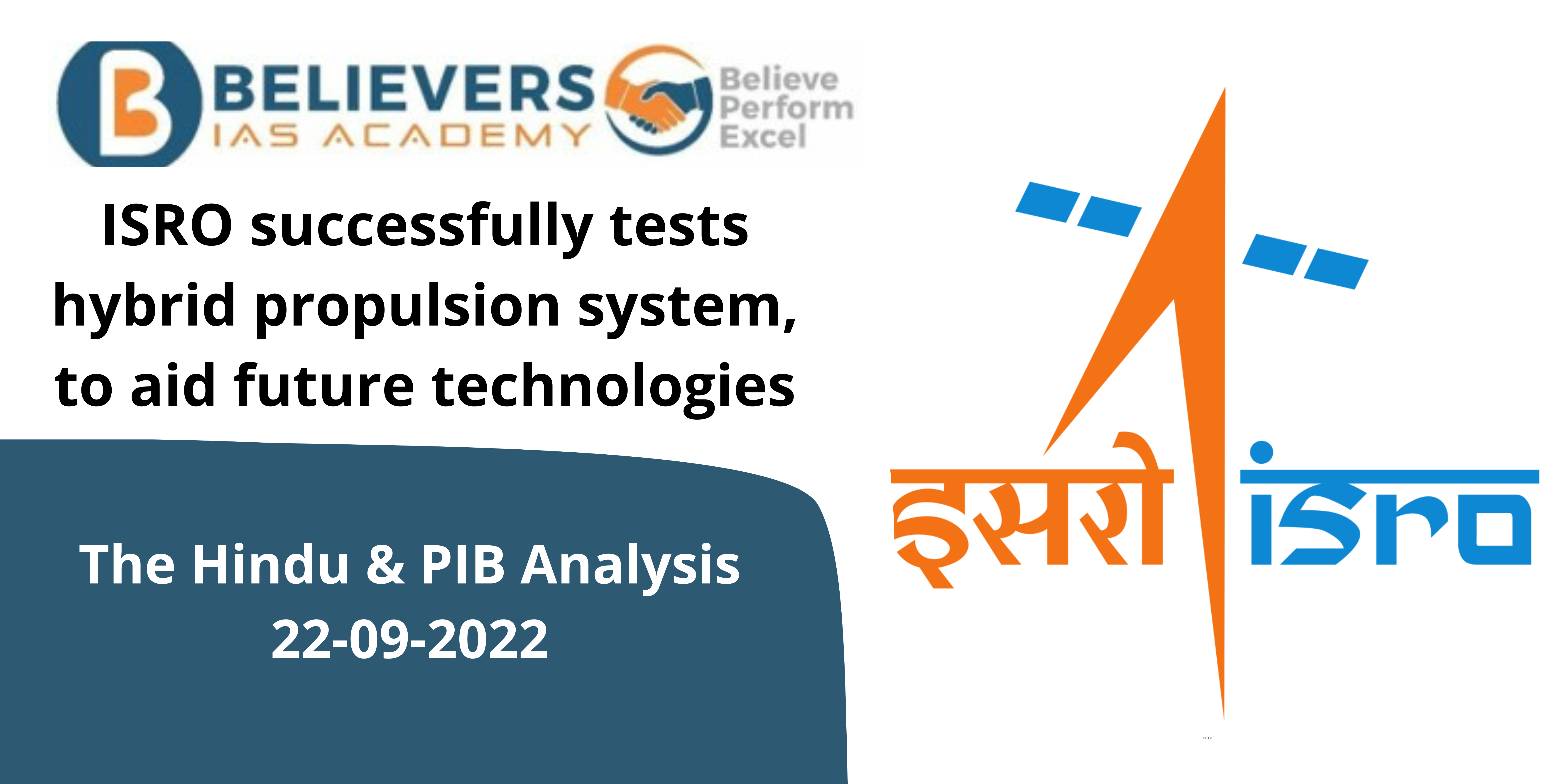ISRO successfully tests hybrid propulsion system, to aid future technologies
#GS-03 Science and Technology
For Prelims
About Hybrid Propulsion System:
Fuel Used:
- HTPB-based (hydroxyl-terminated polybutadiene) aluminised solid fuel and liquid oxygen (LOX) as oxidiser.
Advantages of the new system:
- Conventional HTPB-based solid propellant motors used in rockets use ammonium perchlorate as oxidiser.
- While both HTPB and LOX are environment friendly, the cryogenic LOX is safer to handle.
- Unlike conventional solid motors, the hybrid technology imparts restarting and throttling capabilities on the motor.
- The use of liquids facilitates throttling and control over the flow rate of LOX.
Conventional Rocket Fuels:
- The Indian Space Research Organisation (ISRO) conventionally uses the fuel UDMH (Unsymmetrical Di-Methyl Hydrazine), which is highly toxic and corrosive, along with the nitrogen Tetroxide as the oxidiser. This combination is called a “dirty combination.”
- Due to the pollution and toxicity of these materials, most of the countries across the world are shifting to cleaner fuels such as liquid methane or kerosene.
About rocket propulsion:
- Rockets work under Newton’s third law of motion which states that “To every action there is always opposed an equal reaction; or the mutual actions of two bodies upon each other are always equal and directed to contrary parts.”
- When the fuel explodes out of the rocket engine, the outward going fuel exerts a force which is equal in magnitude but opposite in direction to the force of the exploding fuel. This is what propels the rocket.
- However, since rockets are designed to work in outer space, where there is a lack of oxygen, it must carry its on oxidizer in order to allow the fuel to burn.
About Vikram Sarabhai Space Centre (VSSC):
- VSSC was founded at Thumba, a coastal village at Thiruvananthapuram, the capital city of Kerala, in 1962.
- The Centre is named after Dr Vikram A Sarabhai, who is celebrated as the father of Indian Space Programme.
- VSSC is the lead centre of ISRO responsible for the design and development of launch vehicle technology.
The major programmes at VSSC include:
- Polar Satellite Launch Vehicle (PSLV),
- Geosynchronous Satellite Launch Vehicle (GSLV) and
- Rohini Sounding Rockets
as well as the development of
- Geosynchronous Satellite Launch Vehicle (GSLV) Mk Ill,
- Reusable Launch Vehicles,
- advanced technology vehicles,
- air-breathing propulsion and
- critical technologies towards human spaceflight.




